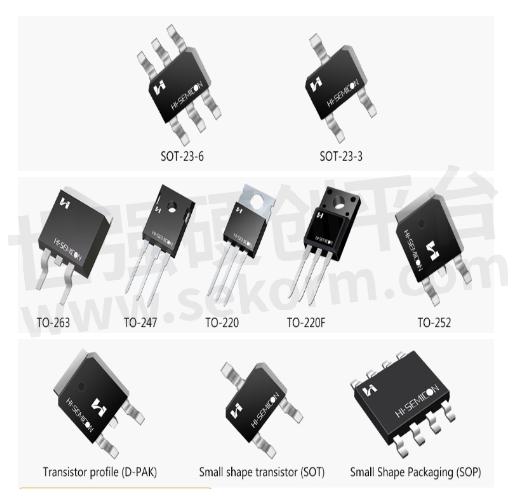Why are MOS tubes broken down by static electricity,and what should we do about it?

Causes and solutions of MOS tube breakdown
MOS tube a ESD sensitive devices, its input resistance is very high, and the gate electrode capacitance is very small, so vulnerable to external electromagnetic or electrostatic induction and charged (a small amount of charge on the interelectrode capacitance can form a very high voltage (think U = Q/C) will be pipe damage, and because of the strong electrostatic situation difficult to charge and discharge to electrostatic breakdown.
There are two ways of static breakdown:
1. Voltage type, that is, the thin oxide layer of the grid breaks down and forms pinholes, short-circuiting the grid and source electrode, or short-circuiting the grid and drain electrode;
2. It is the power type, that is, the metallized film aluminum strip is fused, causing open gate or open source. JFET tubes, like MOS tubes, have a high input resistance, except that MOS tubes have a higher input resistance.
The time constant of the discharge pulse is much less than the time constant of the device heat dissipation. Therefore, when the electrostatic discharge current passes through the pn junction or Schottkey junction with a small area, a large instantaneous power density will be generated and local overheating will be formed, which may make the local junction temperature reach or even exceed the intrinsic temperature of the material (such as the melting point of silicon at 1415℃). As a result, local or multiple melting in the junction area will lead to short circuit of the PN junction and complete failure of the device. The occurrence of such failure mainly depends on the power density in the internal region of the device. The smaller the power density is, the less vulnerable the device is to damage.
The reverse biased PN junction is more prone to thermal failure than the positive biased PN junction, and the energy required to damage the junction under the reverse biased condition is only about one-tenth of that under the positive biased condition. This is because most of the power is consumed in the center of the junction, while most of it is consumed in the volume resistance outside the junction. For bipolar devices, the area of the emitter junction is usually smaller than that of other junctions, and the junction surface is closer to the surface than that of other junctions, so degradation of the emitter junction is often observed. In addition, PN junction with breakdown voltage higher than 100V or leakage current less than 1nA (such as JFET gate junction) are more sensitive to electrostatic discharge than conventional PN junction with similar size.
All things are relative, not absolute, MOS tube is more sensitive than other devices, ESD has a great feature is randomness, not without the MOS tube can break it down. In addition, even if ESD is generated, it does not necessarily break down the pipe.
The basic physical characteristics of static electricity are:
(1) Have the power to attract or repel;
(2) There is an electric field, and there is a potential difference with the earth;
(3) Discharge current will be generated.
These three situations that ESD will generally affect electronic components in the following three situations:
(1) The components absorb dust, change the impedance between lines, and affect the functions and life of the components;
(2) The insulation layer and conductor of the element are damaged by electric field or current, so that the element cannot work (completely destroyed);
(3) Due to the moment of soft breakdown of electric field or electric current overheating, so that the component is injured, although it can still work, but the life is damaged.
Therefore, ESD may cause damage to MOS tube in one or two cases, not always the second case. In all three cases, if the component is completely broken, it must be detected and eliminated during production and quality testing, with less impact. If the component is slightly damaged, it is not easy to be detected during normal testing. In this case, it is often detected only after repeated processing or even when it is already in use. Not only is inspection difficult, but the loss is also difficult to predict. Static electricity can cause as much damage to electronic components as serious fire and explosion accidents.
Under what conditions will electronic components and products suffer static damage?
It can be said that the whole process of electronic products from production to use is under the threat of electrostatic damage. From the manufacture of devices to the installation and welding of plug-ins, the whole machine assembly, packaging and transportation, and even the application of products, are under the threat of static electricity. In the whole production process of electronic products, every small step in every stage, electrostatic sensitive elements may be affected or damaged by static electricity, but in fact, the most important and easily neglected point is in the transmission and transportation process of the components. In this process, transportation is easily exposed to external electric fields (such as near high-voltage equipment, frequent movement of workers, rapid movement of vehicles, etc.) and is damaged, so special attention should be paid to transmission and transportation process to reduce losses and avoid indifferent disputes. Protective gazina regulator tube protection.
At present, MOS tube is not so easy to be broken down, especially the high-power VMOS, mainly because many of them have diode protection. VMOS gate capacitance is large, no high voltage induction. Unlike the dry north, moisture in the south does not generate static electricity. In addition, IO port protection has been added inside most CMOS devices. However, it is not a good habit to touch CMOS device pins directly by hand. At least make the pin solderability worse.
Causes and solutions of MOS tube breakdown
1. The MOS tube itself has a high input resistance, and the capacitance between the grid source electrodes is very small, so it is very easy to be charged by the induction of external electromagnetic field or static electricity. However, a small amount of charge can form a quite high voltage (U=Q/C) on the capacitance between the electrodes, which will damage the tube. Although the MOS input terminal has anti-static protection measures, it still needs to be treated carefully. In storage and transportation, it is best to use metal containers or conductive materials packaging, do not put in chemical materials or chemical fiber fabrics that are prone to generate electrostatic high pressure. During assembly and debugging, tools, instruments and workbenches shall be well grounded. To prevent the operator from damage caused by static interference, such as not to wear nylon, chemical fiber clothes, hands or tools before contact with the integrated block is best to connect to the ground. When straightening, bending, or manually welding component leads, the equipment used must be well grounded.
2. The protection diode at the input end of MOS circuit, whose on-time current tolerance is generally 1mA, should be connected with the input protection resistance in series when there may be too large transient input current (over 10mA). Therefore, a MOS tube with internal protection resistance can be selected for application. And because the protection circuit absorbs limited instantaneous energy, too large instantaneous signal and too high electrostatic voltage will make the protection circuit lose its function. Therefore, the electric soldering iron must be reliably grounded during welding to prevent leakage and breakdown of the input end of the device. In general use, the waste heat of the electric soldering iron can be used for welding after the power is cut off, and the ground pin can be welded first.
MOS is a voltage driving element, which is very sensitive to voltage. The suspended G is easy to accept external interference to enable MOS to conduct. The external interference signal charges the G-S junction capacitance, and this tiny charge can be stored for a long time. In the test, G suspension is very dangerous. Many pipes burst in this way. If G is connected with a pull-down resistance to the ground, the bypass interference signal will not go straight through, which can generally be 10~20K. This resistance is called grid resistance.
(1). To provide field effect tube bias voltage;
(2). It can reduce the resistance (protect the gate G~ source S).
The first role good understanding, explain the principle of the second a role here: protection grid G ~ source S: field-effect tube of G - S electrode resistance value is very big, so as long as there is a small amount of static electricity can make his G - S the equivalent capacitance of electrode to a high voltage at both ends, if not timely put these small amounts of electrostatic xie, he has the potential to high pressure at the ends of the field effect tube produce misoperation, might even puncture of the G - S pole; The resistance applied between the gate and the source then dissipates the above static electricity, thus protecting the fET.

Fig.1
- +1 Like
- Add to Favorites
Recommend
- The Sound of MOS Tubes Constantly Rising
- Is It Always Difficult to Use and Replace MOS Tubes for Multimeter Tests?
- These Kinds of MOS Tubes “Breakdown“, How Many Do You Know?
- Heketai‘s SS14 and 1n4148 Diodes, S8205A or Hktq65n03 and Hktd120n04 Mos Products Can Be Used in Electric Drills
- What is the Difference between MOS tube and IGBT?
- Unlocking the Technological Charm of High-Speed Blower Tubes: HXY Power Device Optimization Solutions
- Analysis of Classic MOS Tube Drive Circuit
- Explain in Detail the Cause of MOS Tube Heating
This document is provided by Sekorm Platform for VIP exclusive service. The copyright is owned by Sekorm. Without authorization, any medias, websites or individual are not allowed to reprint. When authorizing the reprint, the link of www.sekorm.com must be indicated.






























































































































































































































































































































































































































































































































































































































































































































































































































































































